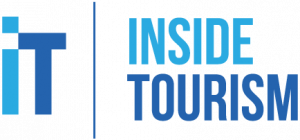This Content Is Only For Subscribers
Horwath HTL has released its data for July 2025 that shows the South Island’s ski-season boom masking a softer performance in several North Island markets.
According to the latest figures from Hotel Data New Zealand (HDNZ), Revenue per Available Room (RevPAR) fell 1.1 per cent compared with July 2024, showing the uneven pace of recovery as the industry still handles changing international travel patterns, a quieter domestic demand, and a patchy events calendar.
While overall visitor arrivals were again closer to pre-pandemic levels, reaching 92 per cent of 2019 volumes, the global economic and local challenges slowed momentum.
However, international arrivals rose 4 per cent year-on-year in July, but for the first seven months of 2025 they remain 12.3 per cent below the same period in 2019.
Australia fuels growth
Australia was the standout market, with arrivals increasing 13 per cent to 152,142 off the back of a targeted Tourism New Zealand campaign. In a seasonal shift, 68 per cent of Australian visitors landed in the South Island, drawn in by good snow conditions and competitive flight pricing.
Arrivals from China dropped 18 per cen t to 37,362, reversing last year’s increase from the World Choir Games, while the United States market slumped to a two-and-a-half-year low of 10,473 visitors. Economic forecast Informetrics now expects a full recovery of international arrivals in 2028, a year later than previously thought as geopolitical issues and new US tariffs weigh on global travel growth.
Local travel remained quiet in July, with households and businesses still feeling the pinch of 5.2 per cent unemployment and inflation holding at 2.7 per cent. While an August interest rate cut is expected to lift morale. July’s data showed domestic patterns were largely unchanged.
Auckland saw majority of the slowdown. With no repeat of last year’s big crowd-pullers- the World Choir Games and an All Blacks Test. Demand fell 5 per cent, balancing a 5 per cent increase in room supply, resulting in 9000 fewer room nights sold.
In addition, the city’s 5-star hotels jumped 17.6 per cent (528 rooms) and saw an 11 per cent lift in demand, while the 4.5-star tier slipped 9%.
In Wellington, things were brighter. A double-header rugby weekend featuring the All Blacks and Black Ferns pushed occupancy to 91.9 per cent on match day. The arrival of UK football club Wrexham AFC to face the Wellington Phoenix further increased demand.
The Tākina Convention Centre was another boost, hosting three multi-day conferences (1,300 delegates) and two gala dinners (800 guests). Hotels reported a 13 per cent rise in room nights, along with higher trans-Tasman arrivals at Wellington Airport.
Hamilton continued its quiet rise, ranking third in occupancy and second in average daily rate (ADR) among the country’s nine main hotel markets. The return of Jetstar flights from Sydney and the Gold Coast in June brought 4524 Australian arrivals in July, although 72 per cent were returning Kiwis suggesting a bigger impact on hotel demand may be seen in the summer season.
Queenstown and Christchurch also had good numbers with Queenstown a recorded a 76 per cent occupancy rate in July, marking a five-year high for the month, with average daily rates (ADR) growing around 9 per cent across all segments. Luxury accommodation set a new benchmark, with 4.5–5-star ADR reaching $420.41 — the highest winter rate ever recorded — while revenue per available room (RevPAR) was double the national average.
Christchurch also had excellent results, achieving a 68 per cent occupancy rate- its strongest July in a decade. Premium properties saw a record 74 per cent occupancy in the 4.5–5-star segment, driven by strong demand from conferences and free independent travellers from both domestic and Australian markets. While ADR growth was lessened by a 3.4 per cent decline in 3–4-star hotels, this was partially balanced by a 1 per cent increase in quality properties.



